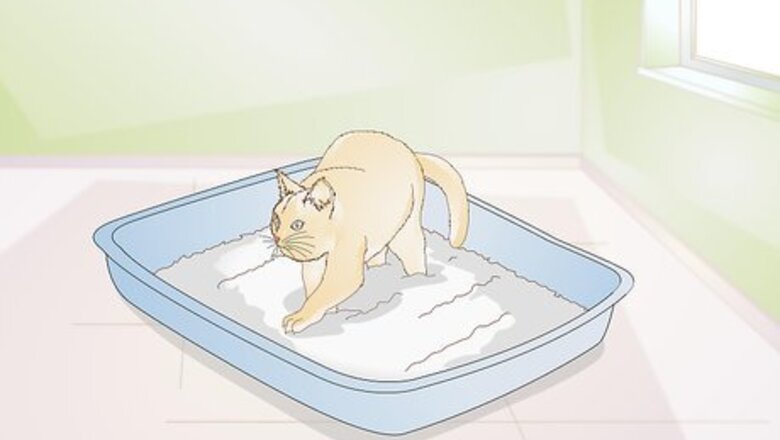
views
Trying Different Litter Box Types
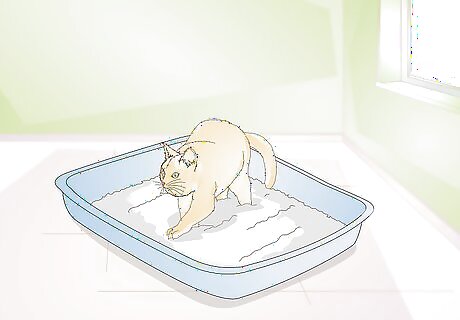
Get the biggest litter box you can find. Cats bury their urine and feces after they use the litter box, so they are more likely to kick litter out of the pan if the litter box is too small. To reduce the amount of litter that gets kicked out of the pan, make sure that you provide your cat with the biggest litter box you can find. If possible, get an auto mechanic’s oil change tray to use as your cat’s litter box. These trays have high sides and they are nice and big to help contain more of your cat’s litter.
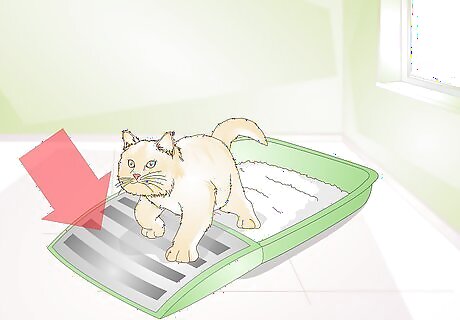
Look for a litter box with a tracker trap. Some litter boxes have built-in tracker traps around the edges that absorb some of the litter on your cat’s paws. Try to find a litter box that has a built-in tracker trap to help reduce litter tracking.
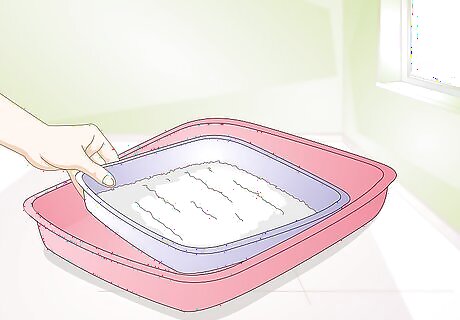
Place your cat’s litter box inside of another litter box. You can also nest your cat’s litter box inside of another litter box to prevent litter from getting out of your cat’s box. Try placing your cat’s litter box inside of another box with shallow sides. If you can’t find another litter box or just don’t want to buy one, then a cardboard box will also work.
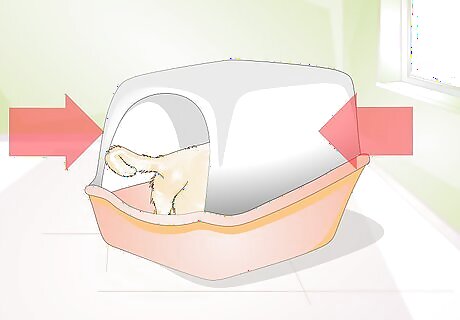
Try a covered litter box. Covered litter boxes can reduce litter tracking because they have walls on three sides, so your cat will not be able to kick as much litter out of the box. However, these types of boxes do not completely solve the problem because your cat may still kick litter out of the front entrance to the box. Keep in mind that some cats dislike covered litter boxes because they keep odors inside the box and they are confining. If you have never used a covered litter box with your cat before, try adding one and see if your cat will use it.
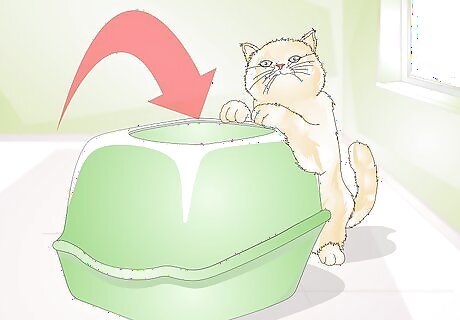
Find a top entry litter box. Getting a top-entry litter box may also be a good solution to the problem. Top entry litter boxes are closed on all sides and your cat has to enter through the top of the box. Just keep in mind that top-entry boxes are not ideal for all cats. For example, if your cat is older or arthritic, then she may have a hard time getting in and out of her box. Some cats also dislike these boxes because they are confining.
Trying Other Litter Control Techniques
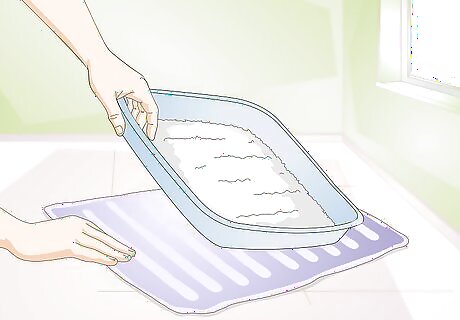
Place a scatter mat under your cat’s litter box. Scatter mats are like floor mats for cats. You can place a large scatter mat under your cat’s litter box so that he will have to wipe his feet after he leaves his litter box. These mats can help to absorb some of the litter on your cat’s paws and prevent him from tracking litter all over. For extra litter trapping power, try placing multiple mats around your cat’s litter box. There are lots of different kinds of mats that you can try. You can go with a basic floor mat, a plastic mat, a sisal mat, or even get a mat that looks like fake grass. Keep your cat's paws and nails trimmed up so that lesser dirt sticks to them.
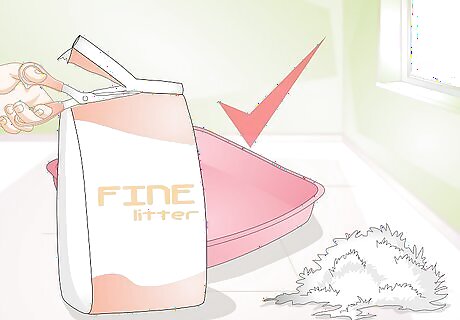
Switch to a different type of litter. Cats prefer a fine-grained litter, but if it is too fine, then too much may be sticking to your cat’s paws. Try changing to a litter that is slightly coarser than the litter you are using now. Cat litter comes in two basic types (clumping and non-clumping), but there is a lot of variation in the materials used to make cat litters. Clumping litter. Clumping litters are those that form a lump around urine so that it is easy for you to scoop litter out of your cat's litter box. Clay clumping litter is the most common, but you can also find clumping litter that is made from corn. You might find that a corn-based litter will not lead to as much tracking as clay litter. Non-clumping litter. You can also look into different types of non-clumping litters. Non-clumping litters are available in clay, sawdust, wheat, and pine. Some of these litters come in large particles or pellets, so these might be harder for your cat to track out of the box as well.
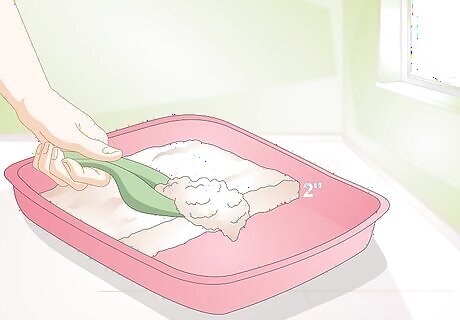
Fill the litter box with only one to two inches of litter. Cats do not need a deep bed of litter. Having too much litter in the pan may even lead to more litter ending up outside of the box. Instead, only fill your cat’s litter box with about one to two inches of litter.
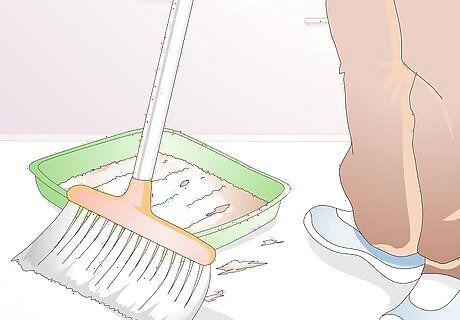
Vacuum or sweep around your cat’s litter box daily. Taking a few minutes to vacuum or sweep around your cat’s litter box each day may also help to reduce tracking. Although this creates more work for you, keeping the area around your cat’s box clean will keep her from walking through litter and tracking it to other areas of the house.
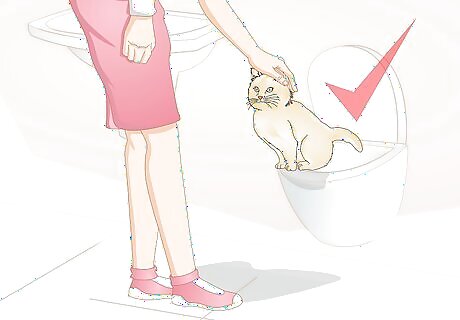
Consider toilet training your cat. If you are tired of cleaning your cat’s litter box, then you might consider toilet training your cat. As long as your cat is not elderly or arthritic, then you may be able to train her to use a toilet. Toilet training a cat is easier with some special equipment, such as training seats that fit over your toilet bowl. Keep in mind that the process of toilet training a cat will take lots of time and patience. If you do not have the time to invest in training your cat to use the toilet, then you may want to stick with the litter box.




















Comments
0 comment